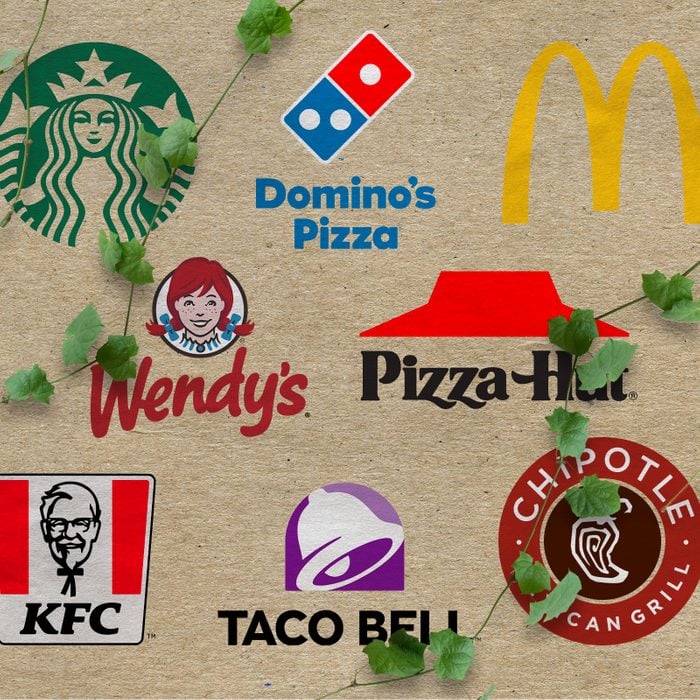
Is fast food sustainable?
With around 200,000 fast food restaurants, the U.S. sees a lot of on-the-go eating each week. In the past, fast food restaurants have been some of the biggest environmental polluters—relying on single-use containers, cups, and silverware (not traditionally made from sustainable materials). That’s led to a lot of unnecessary waste and harm to the environment, but as the global demand for more sustainable fast food options has increased, companies are joining environmental efforts to lower their carbon footprint.
Why are fast food restaurants not sustainable?
“The fast food industry falls into the crosshairs of a lot of the concerns about climate change and sustainability,” explains Jennifer Brandon, PhD, climate portfolio manager at King Philanthropies. Since the fast food industry is a carryout industry, it incorporates a lot of single-use plastics instead of reusable dishes and silverware that can be washed. “It’s absolutely helpful to the environment to reduce single-use plastics whenever possible,” says Brandon. She encourages fast food restaurants to make sauce packets, utensils, and straws optional, so the cashier simply asks the customer their preference—since most of these items are not recyclable and often get thrown away unused.
Another issue is food waste that is not getting composted. “Up to 40 percent of food in America gets wasted, and much of that is on the restaurant prep side,” explains Brandon, who promotes back-of-house composting.
How do you make a fast food restaurant sustainable?
“The single most important thing an individual can do to lower their carbon footprint is to reduce their red meat consumption, which is a hard message when you’re a hamburger company,” Brandon says. In 2021, McDonald’s and Yum! Brands (KFC, Pizza Hut, and Taco Bell) partnered with Beyond Meat for their plant-based protein menu items. The plant-based company—which uses less water, land, and energy (generating fewer greenhouse gas emissions)—has also partnered with Carl’s Jr., Del Taco, and Panda Express (currently in 70 of their locations).
Whether businesses are switching from plastic packaging to paper products or trying vegetarian and plant-based options, you as the customer can make a big difference by supporting these sustainable fast food restaurants. At the corporate level, specific goals have been set to use less water, to protect our forests and natural resources, and to choose sustainable supply chain options. Check out our list to see how some of your favorite fast food restaurants are going green.
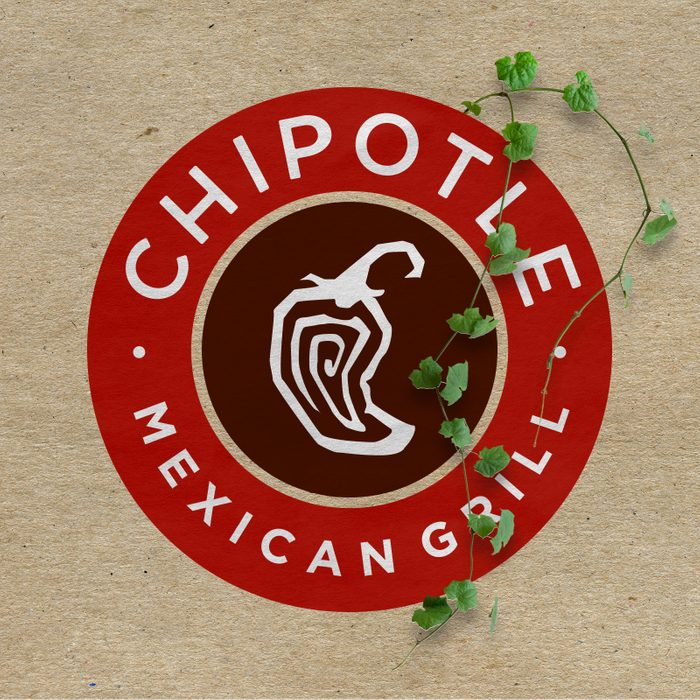
Chipotle Mexican Grill
Best green goal: Sustainable and regenerative food sources
Chipotle’s leadership team is taking the company’s progress on sustainable fast food seriously. “How we grow our food is how we grow our future,” says Brian Niccol, chairman and CEO. Their focus is on supporting sustainable small farms—which means more organic and local food options. Focusing on local limits the amount of fossil fuels required for production and delivery. In 2020, they purchased more than 31 million pounds of local produce—an investment of more than $23 million into local food systems. They also increased their organic and transitional bean purchase by one million pounds.
Another emphasis is on regeneratively grown or raised food—which has to do with enhancing farm ecosystems, capturing carbon, and boosting soil biodiversity. Not only do their meats and dairy options contain zero nontherapeutic antibiotics or added growth hormones, but you can also feel good knowing they only use animals that have been treated humanely (which their animal welfare team checks up on regularly). Psst, here’s the inside scoop on some of Chipotle’s best-kept secrets.
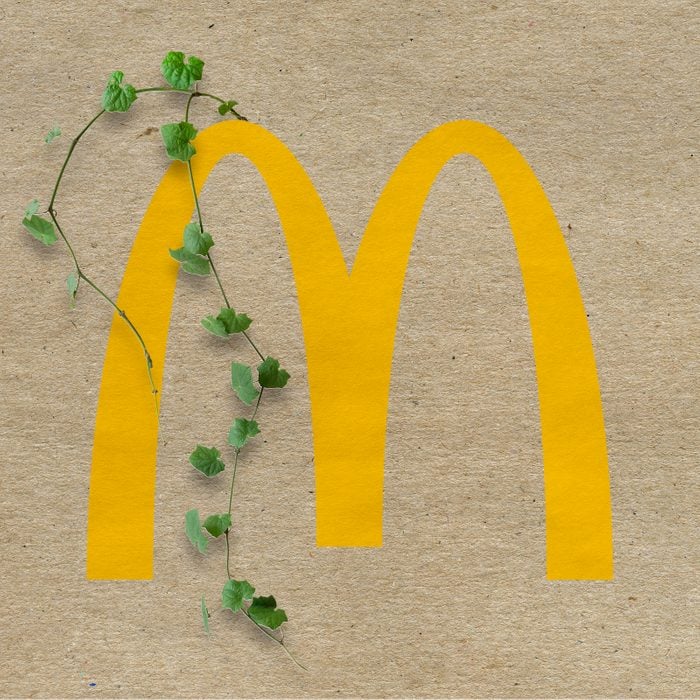
McDonald’s
Best green goal: Almost 100 percent deforestation-free supply chains
McDonald’s places its environmental focus on climate action, packaging and waste, and sustainable agriculture and beef (along with their plant-based Beyond Meat “McPlant” option). But they also care about conserving forests and water stewardship—which means conserving water but also using it responsibly and efficiently. “To secure a thriving food system for the future, the food industry has an opportunity and responsibility to help mitigate the impacts of climate change and find more sustainable ways to feed people,” reports Francesca DeBiase, executive vice president and chief supply chain officer at McDonald’s.
When it comes to climate action, they have reduced their absolute emissions from restaurants and offices by 8.5 percent and have decreased their supply chains’ emissions by almost six percent compared with their baseline in 2015. In 2020, 99.6 percent of their beef, palm oil, and coffee supported deforestation-free supply chains. McDonald’s is also committed to eco-friendly fishing, which means they only source fish from sustainable-certified fisheries.
Packaging is maybe their biggest change—more than 80 percent of the company’s packaging materials come from fiber materials, and 80 percent of those come from renewable or recycled materials, but their goal by 2025 is to reach 100 percent packaging from renewable and recycled or certified sources. Not only that, but 25 percent of their restaurants in their top 30 markets offer a recycling option—though their eco-friendly restaurant goal is to include all locations by 2025. Turns out there’s more to love about McDonald’s than just how good their Sprite is.
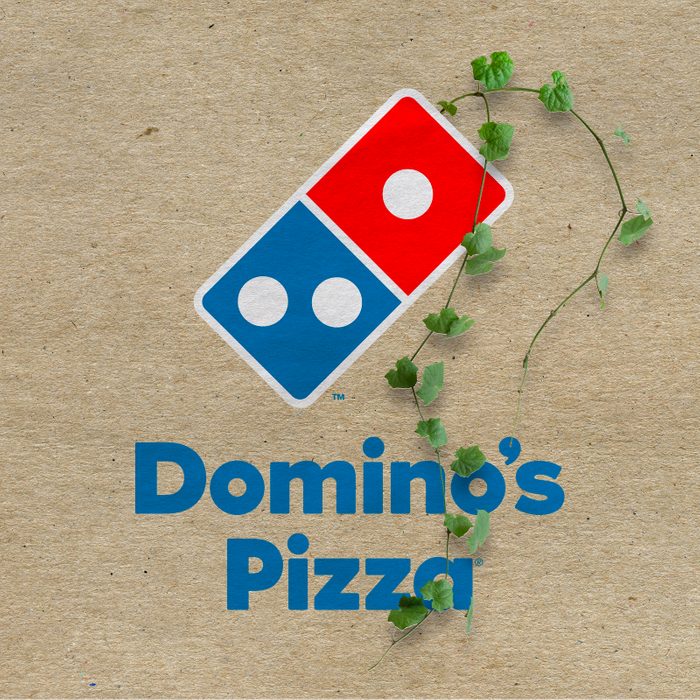
Domino’s
Best green goal: Increased recycled packaging materials
Domino’s is committed to achieving net-zero emissions across its chain by 2050. After all, one of their core values is: “Do the right thing.” Their company believes protecting the planet for future generations is the right thing to do for their customers, their team members, and their business. Lowering their carbon footprint is helped by their natural gas ovens, which have become more efficient due to new technologies and innovations. When it comes to saving water, as a sustainable fast food restaurant they’re looking into implementing systems and programs to track water usage more closely.
Domino’s also wants to focus on recycling and waste—when it comes to cardboard and even excess pizza dough. In 2020, Domino’s increased the amount of recycled content in their boxes from 40 to 70 percent (the other 30 percent comes from responsibly managed forests). When you order their pizza, don’t assume you can’t recycle just because a little bit of cheese or grease sticks to the box—the cardboard can actually be recycled up to seven times. Domino’s is committed to increasing awareness about how easy it is to recycle pizza boxes. Another item you didn’t know was recyclable? Bottle caps.
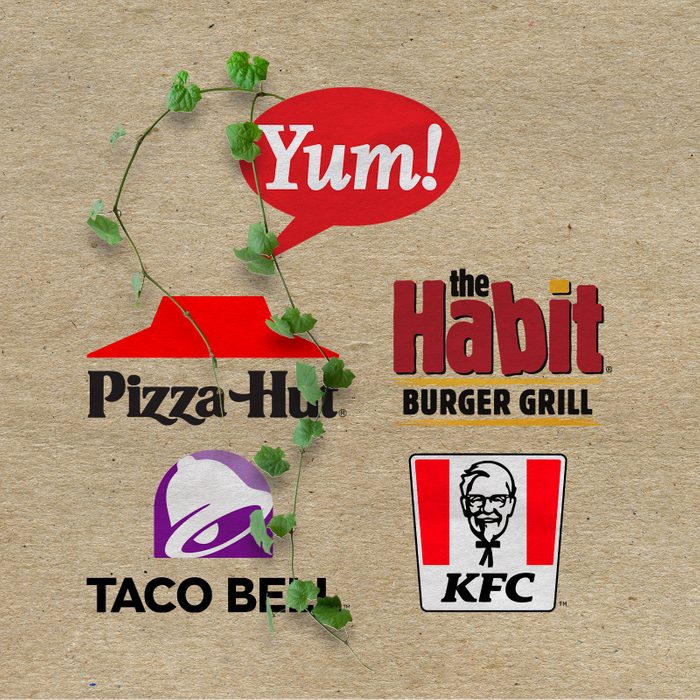
Yum! Brands (KFC, Pizza Hut, Taco Bell, and The Habit)
Best green goal: Reduced carbon emissions
The Yum! Brands group has recently set new science-based targets to increase sustainability goals and to be good stewards of the environment. In early 2021, their goal for KFC, Pizza Hut, Taco Bell, and The Habit became reducing carbon emissions by 46 percent by 2030 (compared with their 2019 baseline)—and their ultimate goal is to achieve net-zero emissions by 2050. They also care about good forest stewardship when it comes to the production of agriculture commodities such as palm oil, soy, paper, and beef products. Water reduction matters too—they aim to reduce their average restaurant’s water consumption by 10 percent by the end of 2025 (based on their 2017 baseline).
Regarding sustainable packaging and waste reduction, their first objective is reducing—then reusing or recycling the waste generated at their restaurants. When they can use less packaging, that’s their primary focus. Also, by staying informed about the climate impacts of the products they source, they can provide guidance to franchise business owners about how to best manage their local environmental footprint.
You can also feel good about how Yum! Brands treats the animals raised as food throughout their supply chain. That’s where their “Five Freedoms” come into play: freedom from fear and distress, hunger and thirst, and discomfort. Plus, their animals are free to express normal behavior and can be assured freedom from pain, injury, or disease. There’s great news about their eggs too: In 2021, the group pledged a transition to 100 percent cage-free eggs by 2026 in the U.S. and Western Europe (with a global transition by 2030). Plus, if you want to cut back on meat to maximize sustainability, you can get a plethora of vegetarian or Beyond Meat plant-based options from their sustainable fast food restaurants.
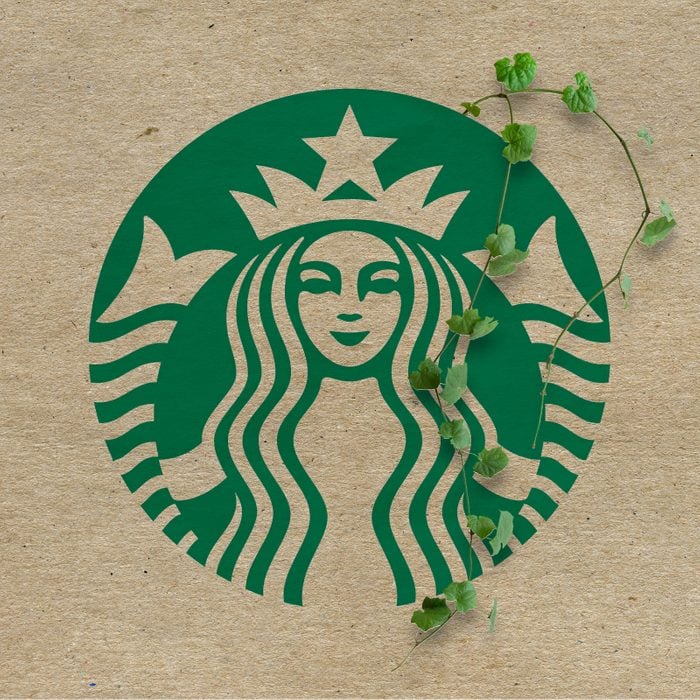
Starbucks
Best green goal: Reduced water usage and more trees planted
Starbucks’s main goal is to become resource positive, which means giving more than they take from the planet. That includes storing more carbon than they emit, eliminating waste sent to landfills (from their stores and from manufacturing), and conserving or replenishing more fresh water than they use. On paper, that means cutting their carbon, water, and waste footprints in half by 2030. The even want to make reusable cups the norm by 2050.
You can feel good about buying your morning caffeinated drink from Starbucks, since their focus is on sustainable coffee. In the past five years, Starbucks has donated nearly 50 million coffee trees to farmers as part of their “10 year, 100 million” tree commitment. Also, this past year, Starbucks launched pilot programs to reduce water usage in coffee processing by up to 80 percent in Guatemala, Mexico, Peru, Rwanda, and Kenya. They were able to do this by investing in new mills.
For a more sustainable future, they also target sustainably sourced dairy. Their goal is to support the Dairy Net Zero Initiative, partnering with the U.S. dairy community to achieve net-zero greenhouse gas emissions and improvements in the water quality on farms. The ultimate goal is better environmental practices and technologies regarding feed production, cow care, and on-farm energy efficiency. But if you prefer a plant-based milk alternative, oat milk is now available in all U.S. Starbucks stores as an eco-friendly, sustainable option.

Subway
Best green goal: Energy efficiency
“Preserve our planet” is Subway’s environmental mantra. The plan is twofold: reducing their environmental impact and preserving our planet’s health. For sustainable agriculture, they want to help local farming communities protect and improve their own well-being. Part of that includes preserving soil fertility, water, and air quality—along with biodiversity in agricultural operations. They also care about the safety and care of the farm animals that are an important part of their supply chain.
Subway is winning when it comes to sustainable packaging, since the majority of their paper packaging is made with recycled materials—and not only that, they have redesigned items to use less material. Their napkins are made from 100 percent recycled fiber, and their sandwich wraps are made from 40 percent post-consumer fiber (though their specialty sandwich pouches and bags are made of 50 percent post-consumer fiber). Even their salad bowls and lids are made from 25 percent recycled PET plastic bottles. Catering trays and lids are also made from 25 percent recycled materials.
Subway is also big on resource conservation. For energy efficiency, the standard equipment for their new restaurants includes energy efficient digital ovens and Energy Star-rated ice machines. Ultimately, their goal is to have as close to zero landfill waste as possible—they’re even composting their food waste in their San Francisco and Seattle locations. Also, their plant and distribution centers are strategically located to reduce fuel usage and carbon emissions (saving 21.8 million truck miles and more than 3.6 million gallons of diesel in the U.S. and Canada each year).
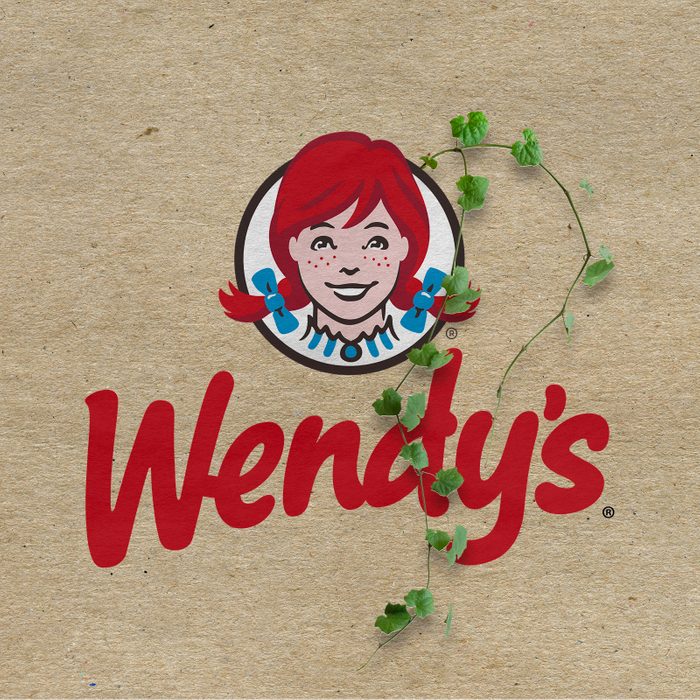
Wendy’s
Best green goal: 100 percent sustainably sourced packaging
At Wendy’s, it’s about delivering more with less environmental impact. “Together with our franchisees, we’ve made great strides to benchmark, understand, and reduce our energy and water use in our restaurants through the Better Buildings Challenge,” shares Steven Derwoed, vice president of global design and construction at Wendy’s. Wendy’s has set a goal to sustainably source 100 percent of their customer-facing packaging by 2026. They are exploring straw-free lids and testing innovative packaging ideas. In Canada, they’re switching from plastic salad bags to paper bags, from plastic stir sticks to wooden ones. Last year, they tested a spicy black bean burger as a plant-based alternative-protein option.
When it comes to water reduction, their goal has been to reduce water use by 20 percent in their U.S. restaurants by 2029 (compared with their 2018 baseline). They’ve already made a splash, moving toward that goal with 15 percent water reduction. Their water-saving kitchen equipment helps too—they’ve converted to automated dishwashing equipment (around 1,000 units now) over the past three years to reduce water use by 47 percent per cycle. That saves enough water annually to fill more than 7,700 Olympic-sized swimming pools. Want more Wendy’s info? Here’s why they keep the baked potato on their menu.
Sources:
- Jennifer Brandon, PhD, climate portfolio manager at King Philanthropies
- Zippia: “19 U.S. Fast Food Industry Statistics”
- Chipotle: “2020 Sustainability Report”
- McDonald’s: “Our Planet”
- Domino’s: “Environmental Footprint”
- Yum! Brands: “Planet: We Grow Sustainably”
- U.S. Dairy: “U.S. Dairy Net Zero Initiative”
- Starbucks: “Becoming Resource Positive”
- Starbucks: “Starbucks Solidifies Pathway to a Planet Positive Future”
- Subway: “Preserve Our Planet”
- U.S. Department of Energy: “Better Buildings Challenge”
- Wendy’s: “Footprint: Delivering More with Less Environmental Impact”
